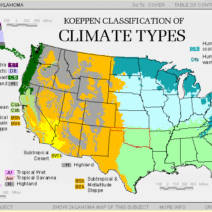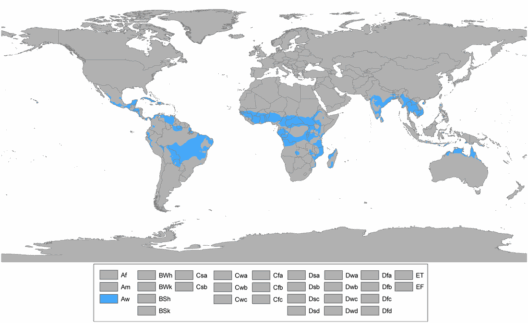Miami, a vibrant city renowned for its alluring beaches and lively culture, is at the forefront of a profound environmental crisis. The phenomenon of global warming is not a distant concern; it is an immediate reality that poses existential threats to the very fabric of this coastal metropolis. With rising sea levels and increased flooding, the question looms larger than life: is Miami sinking due to global warming?
The alarming consensus among climatologists is that a significant impetus for Miami’s predicament lies in climate change. As the planet warms, ice caps and glaciers around the world are melting at an unprecedented rate. The resultant influx of freshwater into the seas contributes considerably to rising sea levels. In Miami, sea levels have surged by approximately one foot in the last century. Projections indicate that this number could double by the year 2060, further exacerbating the struggle against the elements.
Moreover, the subtropical climate of Miami intensifies the effects of rising temperatures. The city experiences more frequent heat waves, leading to higher evaporation rates that, paradoxically, contribute to increased humidity. The interplay of warming temperatures and higher humidity not only makes the environment less comfortable but also spurs on the intensity and frequency of tropical storms and hurricanes. These weather events are not mere anomalies but rather foreboding indicators of a climate in distress.
Flooding in Miami is becoming alarmingly commonplace. In fact, sunny-day flooding—a term that evokes a strange juxtaposition—has become a regular occurrence. During high tides, seawater inundates streets and neighborhoods without the accompaniment of rain. This phenomenon is attributed to the city’s low elevation and porous limestone geology, which allows seawater to seep into the ground and rise through the drainage systems. As a result, streets that were once bustling with daily activity are now transformed into waterways, isolating homes and disrupting livelihoods.
In the face of escalating flood events, Miami residents and city officials are grappling with the implications of climate change. There is an increasing recognition that adaptation strategies must be constructed to bolster the city’s defenses against the encroaching waters. Measures have included elevating roads, creating barriers, and investing in comprehensive drainage systems. These infrastructural adaptations, however, present a dual challenge: not only are they cost-intensive, but they also require long-term planning that considers the inevitable worsening of conditions.
Yet, adaptation is merely a stopgap measure. Long-term solutions necessitate a seismic shift in how society perceives and interacts with the environment. Educating inhabitants about the realities of climate change is essential. Engaging in dialogue about sustainable practices can elucidate how individual choices impact the overall wellbeing of the planet. The promotion of eco-friendly transportation, energy-efficient buildings, and conservation initiatives may not only mitigate individual carbon footprints but also foster a culture of environmental stewardship that can buoy the community’s resilience.
Moreover, the interconnectedness of global climates emphasizes that Miami’s struggle against flooding is not isolated. The city is a microcosm of global environmental challenges wrought by climate change. Events occurring on distant shores reverberate, impacting weather patterns, sea levels, and biodiversity. Thus, the victories and failures of Miami in addressing climate change will send ripples throughout the globe. In essence, the world is watching, and the stakes could not be higher.
Decisive action at the governmental level remains imperative. Policymakers must take the helm to create legislation that acknowledges the looming threats of climate change. Initiatives that prioritize renewable energy sources, emission reductions, and robust urban planning must become a reality, rather than a series of idealistic concepts. Additionally, the intricacies of climate justice must be interwoven into the legislative fabric. There should be a concerted effort to ensure that vulnerable communities, often the first to bear the brunt of climate impacts, are given equitable access to resources and representation in decision-making processes.
Innovation also holds promise in the battle against Miami’s climatic adversities. From advanced sewage systems designed to handle saline intrusion to green infrastructures such as permeable pavements and elevated parks, inventive solutions abound. These strategies can ameliorate flooding while simultaneously enhancing urban aesthetics. Furthermore, integrating technology, such as real-time monitoring of water levels, can empower citizens to navigate the landscape with increasing awareness and forethought.
Despite the formidable landscape ahead, an underlying current of optimism can emerge from the challenges posed by global warming. The socio-environmental crisis gripping Miami offers an opportunity for collective reflection and transformation. Every act of awareness or initiative taken can cultivate a community united in a common goal to combat climate change. This can warrant the transformation of despair into genuine dedication, fostering a sense of responsibility that extends beyond Miami’s borders.
In conclusion, the question of whether Miami is sinking due to global warming transcends mere geographical analysis. It encapsulates the dire need for humanity to reassess its relationship with the environment. Climate change is a harbinger of challenges that will demand innovative responses, cooperation, and resilience. The evolving reality of flooding in Miami functions as both a cautionary tale and a rallying cry—encouraging active involvement and vigilant participation in safeguarding our planet. The tides may be rising, but so too can our resolve. The future is fluid; it is up to society to ensure it flows in a direction that preserves life and sustains the environment for generations to come.








